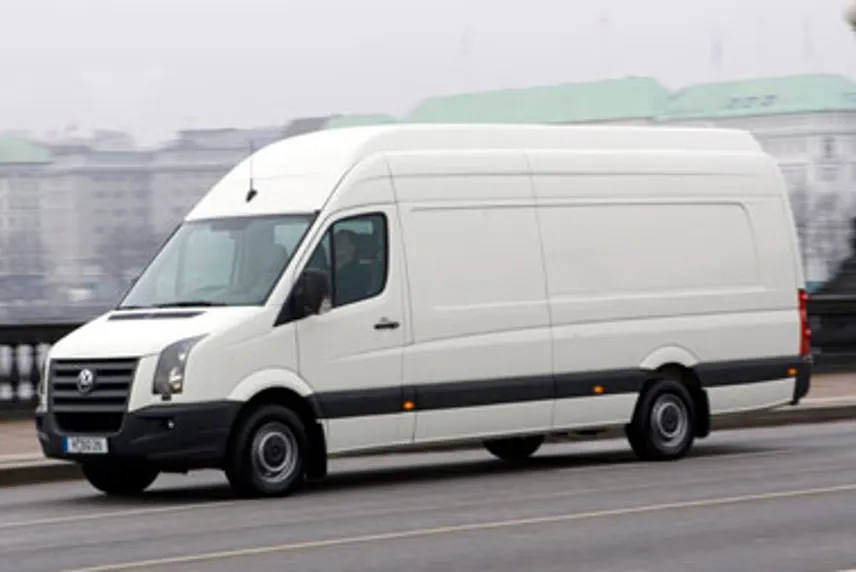Review
There has been a bit of a tussle this year between the PR men at Ford, Mercedes-Benz and Volkswagen.
All three manufacturers have new panel vans being launched this year – Transit, Sprinter and Crafter – and the press officers have been falling over themselves trying to be first to get the collective bums of Britain’s LCV press on to the seats of their new contenders.
Although the Volkswagen Crafter won’t be launched in the UK until September, it was the VW boys who won the battle as a party of van hacks was flown out to Hamburg to test out the new vehicle in February.
First drives of the Sprinter and Transit won’t take place until March and April respectively.
The Crafter is set to replace the aging LT panel van, which has been around for some 30 years now.
It was developed in conjunction with Mercedes-Benz and will be built at its factory in Dusseldorf.
But while many of the components are shared, the Crafter will have its own VW engines, modified suspension and an outrageously styled front end.
While the Sprinter’s bonnet is understated and stylish, the Volkswagen designers set out to shock – and they have certainly achieved their goal.
At the launch, DrBernd Weidemann, Volkswagen chief executive officer for commercial vehicles, said: ‘We wanted to make our van brawny, reliable and flexible. It has a strikingly chiselled look that makes it stand out as a tough performer.’ More on this subject later.
To strike up a strategic partnership with its arch rival may at first seem strange but Weidemann said: ‘Partnerships like this are necessary now to achieve competitive cost-effectiveness.
'To be cost-effectve we need to build at least 100,000 vans a year and we could not do that on our own. This is a win-win situation for both Mercedes-Benz and ourselves.’
Volkswagen sold 36,000 LTs last year and aims to raise this figure by 10% next year.
Weidmann said VW would be chasing fleet business but admitted that the firm had a tough task ahead with the launch of the new Sprinter and Transit in the same year.
One way he aims to gave extra market share is by keeping prices at the same level as the existing LT.
So how did the Crafter name come about? According to Harald Schonberg, VW’s head of sales and marketing, it stands for:
C = cost of ownership
R = roominess
A = appearance
F = flexibility
T TDI ecology
E = ergonomics
R = Rewarding
One for the next pub quiz maybe?
The new model is certainly a quantum leap forward over the old one.
It will be available at 3.0-tonnes, 3.5-tonnes and 5.0-tonnes gross vehicle weight and in three wheelbases, with the addition of an extra-long overhang.
There will be three roof eights – normal, high and super high.
There will also be chassis cabs and crew cabs.
Load volumes will range from 7.5 cubic metres to 17 cubic metres and payloads range from 1.4 tonnes to 3.0 tonnes.
The rear side loading doors are massive – 1,300mm of width to be precise. This means that Europallets can be loaded sideways on.
Standard remote central locking can be controlled separately for cab and rear, meaning a driver can be loading the back end while not having to worry about the local low-life nicking his sandwiches from the cab.
In the front, VW says it has given functionality the highest priority.
It’s a lot larger for a start, meaning even tall drivers will be comfortable.
The seats are all new and seat height adjustment will be standard.
Lumbar support and armrests will be available as options.
Meanwhile, the steering wheel is adjustable and its angle has been changed from 47 degrees to 32 degrees, giving a more car-like feel.
The general trim of the cab is more car-like too, offering a friendlier feel.
Noise levels have been reduced too with noise deadening foam elements in the A an B pillars.
Cubby holes and cup holders abound, while the middle section of the middle seats pulls out to reveal a handy desk.
There are also extra storage spaces under the passenger seats which can be accessed by lifting the seat squabs.
Under the bonnet goes a brand new set of TDI engines which feature common rail technology for the first time.
There are four to choose from – all 2.5-litre five cylinder units offering 89bhp, 109bhp, 136bhp and 164bhp.
Torque is 162lb-ft at 1,750-2,500rpm, 206lb-ft at 2,000rpm, 221lb-ft at 2,000rpm and 258lb-ft at 2,000rpm. All are Euro IV compliant and come with particulate filters.
Transmission is via a six-speed manual gearbox but there will also be a ‘Shiftmatic’ option for the 109bhp and 136bhp versions, based on VW’s DSG system. It can either be used as a full automatic or put in manual mode and ‘nudged’ up and down.
Maintenance levels are extended. The Crafter requires a service inspection every
50,000 miles and an oil change at 30,000 miles or two years.
An onboard indicator will light up if it is felt a change is needed earlier.
















